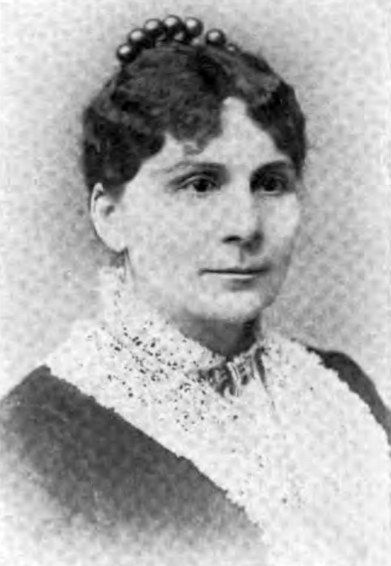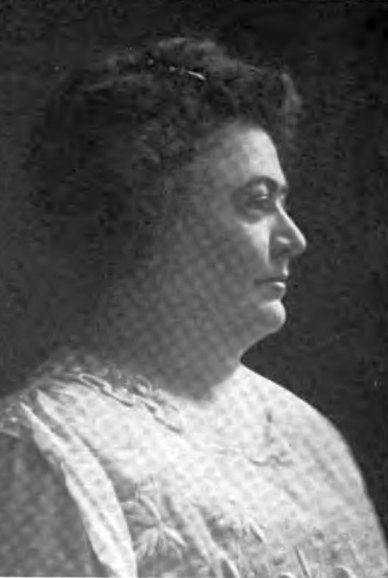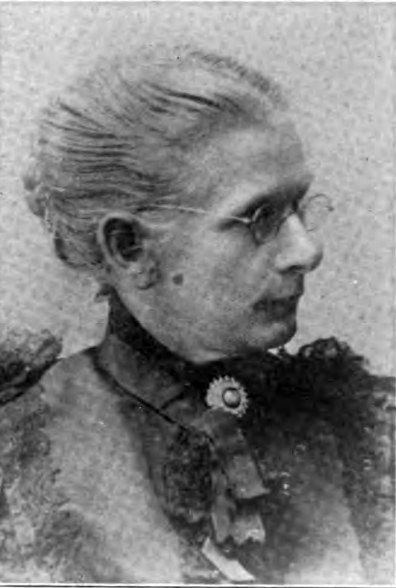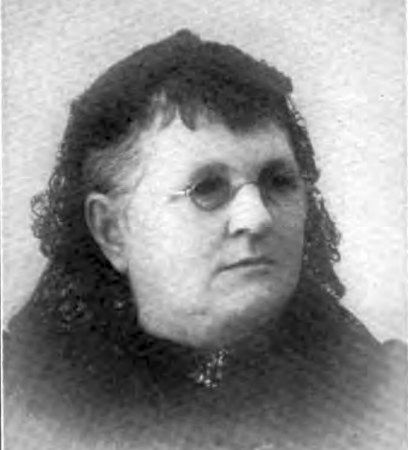Excerpts from Who's Who Among MN Women |
|
Excerpts from Who's who among Minnesota women (1914) [Just the ones related to Benton County.] |
 HESTER CRONK GILMAN |
Mrs. Charles A. Gilman (Hester Cronk), born near Belleville, Ontario, 1837; married at Sauk Rapids, Minnesota, January 1, 1857; died at St. Cloud, March 19, 1910. Came of Scotch Dutch ancestry that blended readily with the progressive spirit of the frontier west. As the wife, in territorial days, of a man who was a leader in the industrial and political life of Minnesota, she had unusual responsibilities as a home and community builder. The mother of a large family, her affection was centered in her home, yet she became a leader in church and civic affairs. She was a charter member of the St. Cloud Reading Room Society, the mother of the public library, and she ever took her full share in public welfare, that lifted the struggling frontier settlement to a city of high ideals, education and culture. She was a wise and kindly leader, who made lasting friends with the charm of her personality. The love of the community was manifested on the occasion of the golden wedding of herself and husband, when tributes to her service and character came, not only from people of her city, but from hundreds of prominent men and women of the State and Nation. As a token of the esteem in which she was held by her home folks, one of the most beautiful parks was named in her honor, "Hester Park," a most fitting memorial to a brave, cultured and most useful woman. (p. 119) Also see the last paragraph in the biography of Charles A. GILMAN. |
|
Mrs. George F. Sylvester (Catherine M. Whilt) born March 7, 1867, was the first white child born in Maywood township, Benton county, Minnesota. She was educated in the public schools of Northfield. In January, 1886, she married George F. Sylvester who was employed as station agent for the Great Northern railroad. After her marriage Mrs. Sylvester learned telegraphy under the direction of her husband and handled the business of thirty trains a day for six years at Milaca, Minn. In March, 1897, Mr. and Mrs. Sylvester moved to Plainview. Mrs. Sylvester is a charter member of the Travelers' club of the state federation. She was president of this club for seven years and is now secretary. She was a member of the State Art Society for two years; treasurer of First District for two years and now chairman of the fine arts committee of the district. Mrs. Sylvester was the first woman in her community to circulate a petition for woman suffrage. She holds a certificate and war medal for honorary work done during the World War. She is a member of the Congregational church and was president of the Ladies' Guild for three years. She is a member of Eastern Star, Rebekah lodge and the G. A. R. Circle and has held office in all of these. Mr. and Mrs. Sylvester have five children. (p. 318) |
 CATHERINE M. WHILT SYLVESTER |
 IDA BENNETT THOMPSON |
Mrs. George Hood Thompson, St. Paul (Ida B.) is a native of Hull, Yorkshire, England, a descendant of sea fearing people, her paternal grandfather, Peter Bennett, being harbor master of the town and her maternal grandfather, William Samuel Hallin, also a master mariner. She is the daughter of Charles Bennett and Innocence Hallin Bennett; married George Hood Thompson of Scarborough and lived for years in Middlesbro, where she was an active member of the temperance society there, which affiliated with the American W. C. T. U. in 1876. Mrs. Thompson came with her husband from Middlesbro. England to Sauk Rapids, Minnesota August 15, 1883, being transferred from the British Woman's Temperance Association to membership in the W. C. T. U. and became president of the fifth congressional district of Minnesota. She moved to Duluth in 1892 and was president of St. Louis County W. C. T. U., being also a state delegate from Minnesota to the World's Convention of the W. C. T. U. in London in 1895. Mrs. Thompson was active in many phases of civic and educational work in Duluth. Through her was established a system of savings accounts in public schools through which hundreds of boys and girls opened bank accounts. She was an active member of the Duluth Press Club and contributed to the Duluth Press when William Cody (Buffalo Bill) was owner of the paper. She was also a charter member of the Twentieth Century Club of that city. She has worked in the Presbyterian church in Duluth and St. Paul. She came to St. Paul in 1910 and has engaged in many progressive civic projects. She is a member of the Woman's Welfare League, Hamline W. C. T. U., Merriam Park Rebekah Lodge and other organizations. (p. 324) |
|
Julia A. A. Wood, was born in New London, New Hampshire, was educated in the academy in that town and in the Charlestown, Massachusetts Seminary. In 1849 she was married to William Wood, lawyer and journalist, living for two years in Greensbury, Kentucky, and moving to Sauk Rapids. Minnesota, where Mr. Wood was United States receiver of public moneys and where he established a weekly newspaper, the Sauk Rapids New Era, Mrs. Wood editing the literary department. She published in this paper a series of sketches entitled "Life in the Woods," which gained wide recognition. Her first contribution in prose from Sauk Rapids appeared in Arthur's Home Gazette under the head of "Letters from the far West." She was the author of several books, among them "The Heart of Myrrha Lake," "Brown House of Duffield," "Story of Annette" and "Basil and Beatrice." She wrote many poems of merit and in the "Poets and Poetry of Minnesota." a book published in 1864. she occupied a prominent place. Her life and work is described in "The New Hampshire Poets," published in 1883 by Charles H. Adams, Claremont, New Hampshire and in "Poets of America," published in 1892 by the American Publishers Association, Chicago, Illinois. Mr. Wood died in 1870 and she became a convert to the Roman Catholic church, thereafter devoting much time to church and religious work and writing under pen name of Minnie Mary Lee. She was active in the D. A. R., and in state Catholic organizations and was postmistress at Sauk Rapids. She died about 1904. (p. 368) |
 JULIA A. A. WOOD |
Updated 5 Oct 2019 by William Haloupek Copyright 1999-2019 MNGenWeb |

